Advertisement
Keeping a closer eye on critical patients

Earlier this year, a patient in the medical intensive care unit (MICU) at Cleveland Clinic’s Fairview Hospital was in respiratory distress and going into flash pulmonary edema during the middle of the night. His nurse called on the intensivist and critical care nurses on duty at eHospital, Cleveland Clinic’s homegrown telemedicine program.
Advertisement
Cleveland Clinic is a non-profit academic medical center. Advertising on our site helps support our mission. We do not endorse non-Cleveland Clinic products or services. Policy
“We were able to identify the problem, give orders for Lasix® and nitroglycerin, and turn the patient around. We prevented him from being intubated,” says Christina Canfield, MSN, RN, ACNS-BC, CCRN, a clinical nurse specialist on the MICU at Cleveland Clinic’s main campus and with eHospital.
Patient stories such as this illustrate why Cleveland Clinic launched eHospital in April 2014. Its primary purpose is to provide better access to staff intensivists and experienced critical care nurses during the night. “eHospital is a second layer of monitoring and a resource for bedside caregivers,” says John Tote, MSN, RN, CCRN, nurse manager for the eHospital program and of the cardiovascular ICUs at main campus. “It facilitates problem identification and swift intervention by physicians and nurses.”
At the heart of the eHospital program is the bunker — the operations center on main campus that is staffed from 7 p.m. to 7 a.m., seven days a week by two critical care nurses and a physician. The team remotely monitors patients on ICUs at main campus and three of Cleveland Clinic’s regional hospitals — Fairview Hospital, Medina Hospital and South Pointe Hospital.
While the eHospital team can’t lay hands on a patient, the healthcare providers have full access to electronic medical records in Epic and can place orders as well as review labs and imaging studies. They can perform visual assessments using in-room cameras and collaborate with caregivers in the ICUs using two-way audiovisual communication tools that can be activated either by eHospital or ICU staff.
eHospital monitors a total of 100 beds in six ICUs. Each room has a camera mounted on the ceiling with a microphone and an eHospital call button on the wall. Healthcare providers in the ICU push the call button to initiate communication, which occurs over a secure connection. eHospital utilizes televisions in the rooms so caregivers, patients and their families can see and hear clinicians in the operations center. Patients aren’t continuously viewed via the camera, and there are no recording capabilities. A solid light on the call button indicates that the room camera is being monitored.
Advertisement
“The eHospital nurses are a back-up to the nurses on the floor,” explains Raymond Jay Coonce, MSN, RN, nurse manager of the surgical ICU at Fairview Hospital. “A lot of nurses who work at night are newer nurses. It’s nice to have that additional resource so if they have a question, they can call in and get an experienced RN to support them.”
Between January and June 2015, eHospital staff reviewed data on more than 37,800 patients and opened cameras in ICU rooms over 19,700 times. A key component to tracking so many patients is the comprehensive, weighted algorithm created by Cleveland Clinic to stratify patients by risk. “It pulls together clinical data from Epic, crunches the numbers and alerts us to risk levels,” says Canfield.
Monitors in the eHospital operations center depict a list of patients, sorted according to risk level. Each patient has a tile that provides their name, age and location, vital signs trend line and risk status (red for high risk and green for low risk). “eHospital notices subtle changes in patients and helps alert us to patients who are just starting to deteriorate,” says Tote.
When eHospital nurses receive an alert on a patient tile, they review the patient’s Epic record and labs and pull up imaging and telemetry monitoring. “If they need to further investigate and put eyes on the patient, they can open the camera in the room,” says Canfield.
The system also has specific, real-time alerts, such as when a patient goes on vasopressors to support blood pressure and when a patient goes into ventricular fibrillation. “Instead of just moving the patient up on the list, a pop-up alert notifies us that a patient is in v-fib or a lethal arrhythmia,” says Tote. “That way, we can use the camera in the room, ask if the staff need help and facilitate running a code until the code team arrives.”
Advertisement
Having an extra set of eyes during crisis situations is invaluable, says Monica Neuman, BSN, RN, nurse manager of the MICU at Fairview Hospital. “Sometimes we have a second- or third-year resident covering at night,” she says. “It’s reassuring for them to collaborate with an intensivist.”
eHospital clinicians intervene in critical situations and they also provide support for routine activities. During downtime, eHospital nurses do virtual rounding, checking in on patients at least once a night. “If there is a safety issue – like a patient who tries to get out of bed – then we can notify eHospital to watch that patient and let us know if they are trying to get out of bed,” says Kristina Gibson, BSN, RN, a staff nurse on the night shift in the MICU at Fairview Hospital.
And even though it’s a technology-driven program, eHospital also contributes to delivering relationship-based care. Consider the patient who went into flash pulmonary edema and was helped by the eHospital team. Several hours prior to that, the patient noticed the eHospital call button light go on during rounding and waved at the camera. The nurse in the operations center said hello and asked the patient if he needed anything. He replied that he was fine. Much later, after stabilization following respiratory distress, the patient asked his bedside nurse to call eHospital. “He thanked them for getting him out of the woods,” says Tote.
More than a year after its implementation, eHospital is a resounding success. Says Gibson, “It’s a really an awesome resource for everyone here!”
Cleveland Clinic’s eHospital ICU telemedicine program was developed in-house by the Clinical Systems Office. “Because it was built from the ground up, we can tailor it to our needs,” says John Tote, MSN, RN, CCRN, nurse manager for the eHospital program and of the cardiovascular ICUs at main campus. “It’s a system that overlays on top of Epic, so if we open a patient’s electronic medical record, it opens the patient tile in eHospital. Everything is seamless and integrated.”
Advertisement
In addition, because the algorithm behind the system isn’t a proprietary one owned by a third-party vendor, Cleveland Clinic can continually improve upon it as the healthcare system gathers more data and outcomes. It can grow eHospital, too. “Because we have developers on-site, if we want to expand the service line we can do it relatively quickly,” says Christina Canfield, MSN, RN, ACNS-BC, CCRN, a clinical nurse specialist on the MICU at Cleveland Clinic’s main campus and with eHospital. “We aren’t waiting for a company to develop the technology for us.”
In May, Fairview Hospital’s Rapid Response Team began using the iPad ® to consult with eHospital when needed. “We are able to quickly make a decision, stabilize a patient and often keep them in their room rather than transfer them to a higher level of care,” says Monica Neuman, BSN, RN, nurse manager of the MICU at Fairview Hospital. “That’s a big win!”
These are the top five orders placed by clinicians at Cleveland Clinic’s eHospital from January through June 2015:
Advertisement
Advertisement

Clinicians prepare to deliver lifesaving care in the face of public health threats

Phone triage system reduces call backs and delays in care
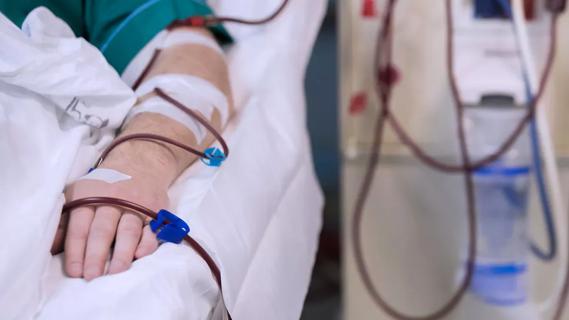
New protocol reduces costs, increases patient and caregiver satisfaction
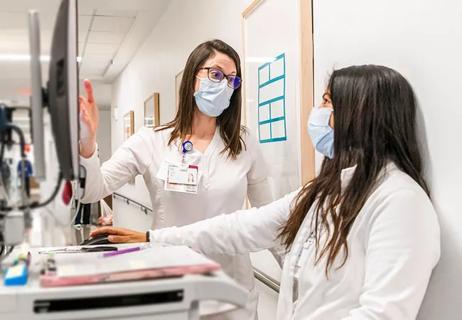
New options benefit caregivers, nursing units and patients
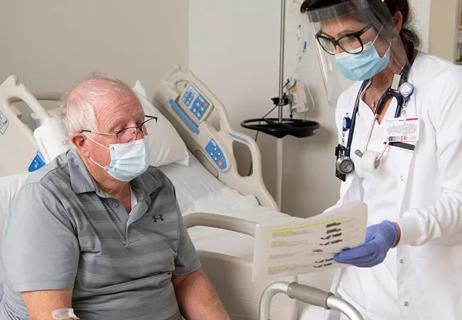
Nurses facilitate preoperative program to educate and prepare patients for ongoing care
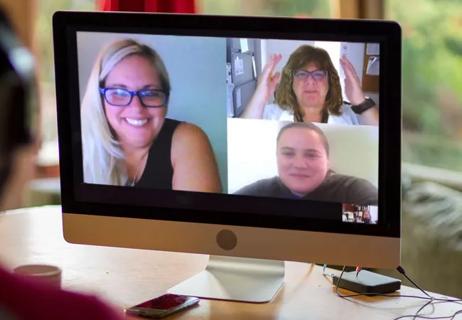
Introduces at-home work and new patient screening tool
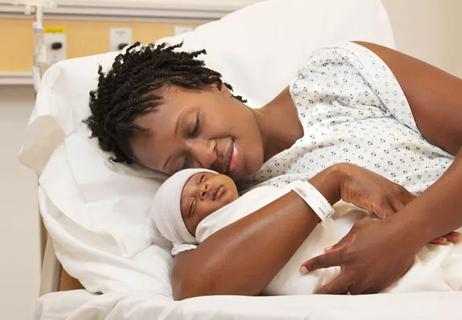
Health disparities, mental health and more

Ideas for approaches to prevention, response and more